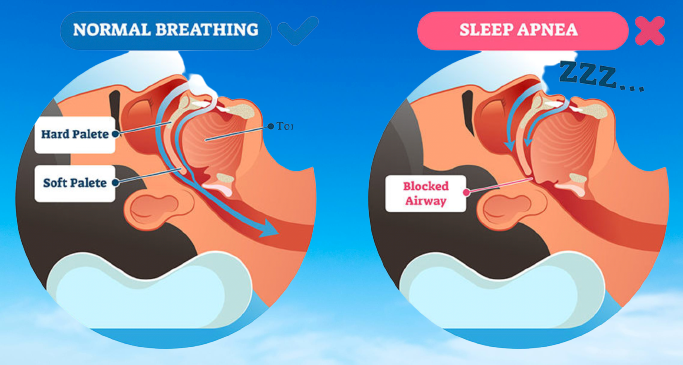Introduction:
Sleep is an essential part of our daily routine, providing rest and rejuvenation for our bodies and minds. However, for those affected by sleep apnea, this vital process becomes disrupted, leading to potential health complications. Sleep apnea is a prevalent yet often undiagnosed sleep disorder that affects millions of people worldwide. In this article, we will explore the intricacies of sleep apnea, its impact on individuals’ lives, available treatments, and the importance of raising awareness about this condition.
What is Sleep Apnea?
Sleep apnea is a chronic sleep disorder characterized by interruptions in breathing during sleep. These interruptions, known as apneas, can last for a few seconds to minutes and occur repeatedly throughout the night. Sleep apnea manifests in two primary forms, namely obstructive sleep apnea (OSA) and central sleep apnea (CSA), representing the divergent paths through which this disruptive sleep disorder can afflict individuals.
OSA is the most common form of sleep apnea, typically caused by the relaxation and narrowing of the throat muscles, leading to blockages in the airway. CSA, on the other hand, is caused by a malfunction in the brain’s respiratory control center, leading to inadequate signaling to the muscles that control breathing.
The Impact of Sleep Apnea:
Undiagnosed and untreated sleep apnea can have serious consequences on an individual’s overall health and well-being. The most immediate and noticeable impact is the disruption of sleep patterns, leading to excessive daytime sleepiness, fatigue, and decreased cognitive function.
In the long term, sleep apnea has been linked to several health conditions, including high blood pressure, heart disease, stroke, type 2 diabetes, and obesity. It can also exacerbate existing conditions such as asthma and contribute to mental health issues like depression and anxiety.
Recognizing the Symptoms:
Identifying obstructive apnea or Obstructive Sleep Apnea (OSA) can be challenging, as the disorder often goes undiagnosed due to its nocturnal nature. However, certain symptoms may indicate its presence. These include loud and chronic snoring, choking or gasping sounds during sleep, morning headaches, dry mouth or sore throat upon waking, frequent nighttime awakenings, and difficulty concentrating during the day.
Diagnosis and Treatment:
If OSA is suspected, seeking medical attention is crucial for an accurate diagnosis. A sleep study, known as a polysomnography, is the most common method used to diagnose this issue. It involves monitoring various physiological parameters during sleep, including brain activity, eye movements, heart rate, and oxygen levels.
Once diagnosed, treatment options for sleep apnea are available to alleviate symptoms and reduce health risks. Continuous Positive Airway Pressure (CPAP) therapy is a widely used treatment method that involves wearing a mask over the nose and/or mouth during sleep. The mask delivers a gentle flow of pressurized air, preventing the airway from collapsing and ensuring uninterrupted breathing.
Other treatment approaches may include lifestyle changes such as weight loss, positional therapy, and avoiding alcohol and sedatives before bed. In some cases, dental devices or surgery may be recommended to address specific anatomical abnormalities contributing to sleep disorder.
Raising Awareness:
Raising awareness about sleep apnea is crucial to ensure early detection and proper management. Healthcare professionals, organizations, and individuals can all play a role in promoting education and understanding about this often underdiagnosed disorder. By increasing awareness, we can encourage people to seek help, improve their quality of life, and reduce the potential health risks associated with untreated sleep apnea.
Conclusion:
Sleep apnea is a common sleep disorder that poses significant risks to individuals’ health and well-being. Its impact reaches far beyond disrupted sleep, contributing to various health conditions and reducing overall quality of life. Recognizing the symptoms, seeking timely diagnosis, and exploring appropriate treatment options are essential steps in managing sleep apnea effectively. By raising awareness and promoting education, we can empower individuals to take control of their sleep health and enjoy the restful nights they deserve.

